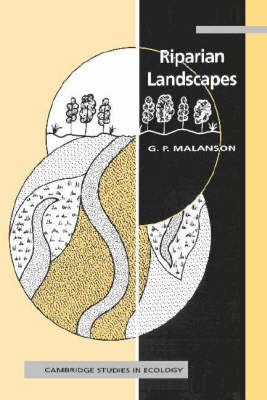
Riparian Landscapes
Seiten
1996
Cambridge University Press (Verlag)
978-0-521-56683-4 (ISBN)
Cambridge University Press (Verlag)
978-0-521-56683-4 (ISBN)
This book examines the ecological systems of river banks and floodplains, focusing on plant communities which are increasingly threatened by development. The book uses landscape ecology to review research areas and to synthesise divergent work in ecology, geomorphology and hydrology.
Riparian Landscapes examines the ecological systems of streamside and floodplain areas from the perspective of landscape ecology. The specific spatial pattern of riparian vegetation is seen as a result of, and a control on, the ecological, geomorphological, and hydrological processes that operate along rivers. Riparian structures are controlled by the spatial dynamics of channels, flooding and soil moisture. These dynamics are part of integrated cascades of water, sediment, nutrients and carbon, to which animal and plant species respond in ways that illuminate community structure and competition. The role of the riparian zone in controlling species distribution and abundance is discussed. Intelligent management of these valuable ecological resources is highlighted. The potential for linking hydrological, geomorphological and ecological simulation models is also explored.
Riparian Landscapes examines the ecological systems of streamside and floodplain areas from the perspective of landscape ecology. The specific spatial pattern of riparian vegetation is seen as a result of, and a control on, the ecological, geomorphological, and hydrological processes that operate along rivers. Riparian structures are controlled by the spatial dynamics of channels, flooding and soil moisture. These dynamics are part of integrated cascades of water, sediment, nutrients and carbon, to which animal and plant species respond in ways that illuminate community structure and competition. The role of the riparian zone in controlling species distribution and abundance is discussed. Intelligent management of these valuable ecological resources is highlighted. The potential for linking hydrological, geomorphological and ecological simulation models is also explored.
1. Principles considered; 2. Riparian topics; 3. Landscape structure; 4. Internal structure; 5. Cascades of material and energy; 6. Species dynamics; 7. Organising the landscape; References; Index.
| Erscheint lt. Verlag | 18.4.1996 |
|---|---|
| Reihe/Serie | Cambridge Studies in Ecology |
| Zusatzinfo | 5 Tables, unspecified; 27 Halftones, unspecified; 17 Line drawings, unspecified |
| Verlagsort | Cambridge |
| Sprache | englisch |
| Maße | 153 x 228 mm |
| Gewicht | 511 g |
| Themenwelt | Naturwissenschaften ► Biologie ► Limnologie / Meeresbiologie |
| Naturwissenschaften ► Biologie ► Ökologie / Naturschutz | |
| ISBN-10 | 0-521-56683-5 / 0521566835 |
| ISBN-13 | 978-0-521-56683-4 / 9780521566834 |
| Zustand | Neuware |
| Haben Sie eine Frage zum Produkt? |
Mehr entdecken
aus dem Bereich
aus dem Bereich
Naturerfahrungen zwischen Quelle, See und Wildfluss
Buch | Hardcover (2024)
Verlag Anton Pustet Salzburg
CHF 41,95
Buch | Hardcover (2022)
National Geographic Deutschland (Verlag)
CHF 55,95


